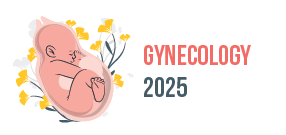Gynecology and Obstetrics
Gynecology 2025
- Home
- Scientific Program

Chongqing Public Health Medical Center, China
Abstract:
Background: To understand the trend of equalization in maternal services, and to provide guidance for policymakers regarding resource allocation and public health policy in China. Methods: Twelve indicators, including maternal services, needs, utilization, and resource allocation, were collected from China Health Statistical Year Book 2010 and 2020. WHO’s comprehensive evaluation model and the non-integral Rank Sum Ratio (RSR) method were used to analyze, rank, and categorize maternal services of 31 provinces (cities, autonomous regions) in China.Results: All provinces (cities, autonomous regions) were grouped into five categories, including relatively balanced area, low input area, resource shortage area, over utilization area, and resource waste area. In 2019, there were 18 provinces (cities, autonomous regions) in the relatively balanced area, and more than one-half had achieved equal development. Compared to 2009, the resource shortage area decreased from three to zero, and the resource waste area increased from four to six. Among the provinces (cities, autonomous regions) with a type change compared with 2009, eight changed to relatively balanced area, and four showed an improvement.Conclusion: Under the policy guidance of promoting the equalization of public health services, maternal services is gradually being realized. However, several provinces (cities, autonomous regions) still have problems such as the mismatch between resource input and health needs, resource waste, and over-utilization, etc. Therefore, specific policies should be formulated according to the actual types to promote the transformation into equalization regions.
Biography:
Updating soon...
Evolve a road map to explore solutions to your next-generation science and technology challenges at a place where scientists, clinicians, scholars, academicians, and policymakers shake hands to strategize visionary ideas and life-saving formulas. Be part of the dynamic forum that knows no boundaries to mastermind breakthroughs that the digital age is awaiting.
Contact Us
Scitechseries Publishing Limited
71-75, Shelton, Covent Garden
London, WC2H 9JQ
Email: gynecology@scitechconference.com
Phone: +44 2045874848
WhatsApp: +44 2045250803
